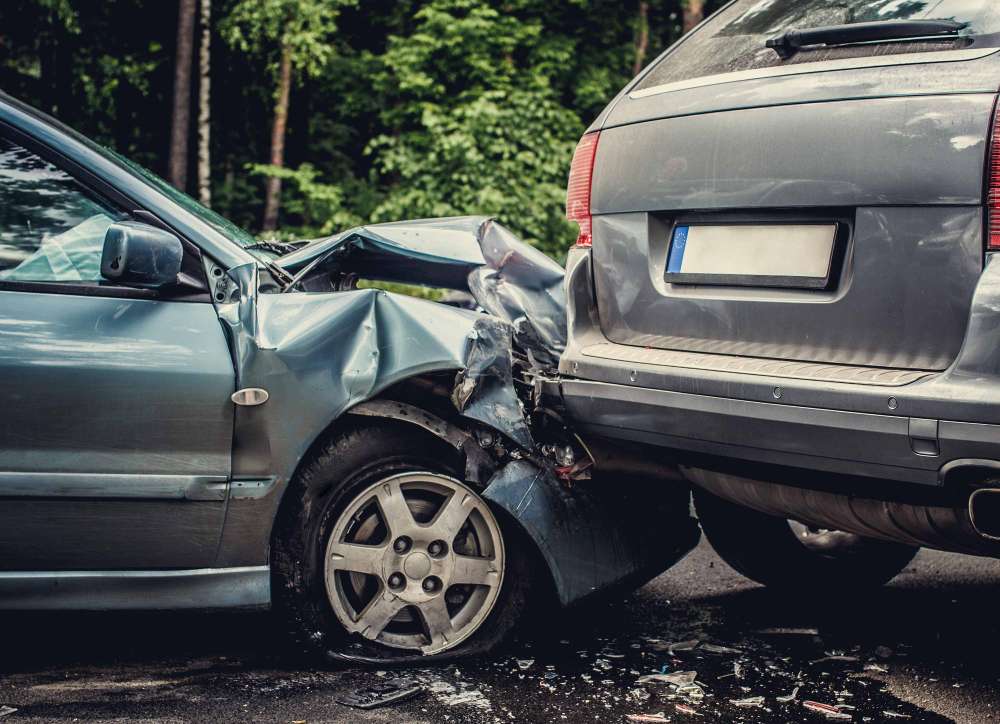Driving without insurance is not just a matter of personal choice; it’s a legal mandate enforced across many jurisdictions worldwide. While some may perceive it as an inconvenience or an unnecessary expense, Do you really think like that? The rationale behind this requirement serves to protect individuals, communities, and the broader societal fabric. This article explore into the reasons why driving without insurance is illegal, shedding light on its implications and the importance of compliance with this fundamental legal obligation.
On this Page:
Why is driving without insurance illegal?
In the United States, the number of vehicles on the roads continues to increase, with over 284 million vehicles operating as of December 2022. Concurrently, the number of licensed drivers is also on the rise, projected to reach 243.4 million in 2023, up from 238.6 million in the previous year.[2]
However, with this increase in vehicular activity comes a sobering statistic: an average of over 6 million passenger car accidents occurs in the U.S. every year. Tragically, these road crashes are not just commonplace; they’re the leading cause of death in the country, claiming the lives of more than 38,000 individuals annually.
Just go through the article and I’m sure you will agree that insurances is necesery for you, and driving without insurance is illegal.
Reason of Driving without insurance illegal:
Risk to Other Drivers:
- Driving without insurance puts other drivers at risk.
- If you cause an accident and you’re uninsured, the other driver might not be able to recover the money they need to cover injuries or damage.
- Most states mandate car insurance to protect everyone involved in accident.
Data on car accident fatalities and injuries categorized by age range.
| Age Range | Total Killed | Total Injured |
| <5 | 313 | 37,898 |
| 5-9 | 307 | 43,781 |
| 10-15 | 673 | 75,624 |
| 16-20 | 3,121 | 280,283 |
| 21-24 | 3,313 | 229,329 |
| 25-34 | 7,713 | 490,004 |
| 35-44 | 5,834 | 341,356 |
| 45-54 | 5,222 | 293,823 |
| 55-64 | 5,605 | 256,324 |
| 65-74 | 3,533 | 149,904 |
| >74 | 3,016 | 83,331 |
Car accidents are an undeniable aspect of everyday life. In the year 2020 alone, the United States witnessed a staggering 35,766 fatal car accidents, alongside 1,593,390 incidents resulting in injuries, and a further 3,621,681 causing property damage.
These figures translate to a total of 5,250,837 collisions occurring within a single year. Such statistics underscore the frequency of car accidents on American roads. This overview seeks to delve into various aspects, including the primary causes of accidents, the demographics most affected, and regions where accidents are particularly prevalent.
Legal consequences of drive without insurance :
- In most states, it’s illegal to drive without car insurance.
- Without insurance, you’d still be responsible for medical bills, repairs, and other accident-related costs.
As of July 1, 2024, Virginia has enacted a new law prohibiting the registration of uninsured vehicles. This measure aims to ensure that all vehicles on the road are adequately insured, enhancing safety and financial protection for motorists.
In Virginia, motorists are required to pay a $500 fee to drive without insurance. If caught driving uninsured without having settled this fee, they will incur a $600 fine and must obtain an SR-22 for a duration of three years.
If you’re stopped by law enforcement while driving without insurance, the repercussions may encompass:
- Penalties: States establish fines, often influenced by the number of prior offenses for driving uninsured, resulting in escalated fines for repeat violators.
- License Suspension: Being caught driving without insurance can lead to a temporary suspension of your driver’s license until you provide proof of insurance or serve a specified duration.
- Registration Suspension: Driving without insurance may result in the suspension of your vehicle’s registration until insurance proof is provided, prohibiting the vehicle’s operation until registration is reinstated.
- SR-22 Requirement: States may mandate drivers to obtain SR-22 insurance following uninsured driving incidents. This necessitates finding an insurer willing to provide SR-22 coverage and paying an annual filing fee for a specified period according to state regulations.
- Administrative Fees: Restoring your license or registration typically involves additional administrative fees apart from fines, potentially requiring a court appearance.
- Increased Insurance Premiums: Operating without insurance designates you as a high-risk driver, resulting in elevated car insurance rates when you eventually secure coverage.
- Potential Incarceration: Failure to settle state-imposed fines for driving uninsured may result in imprisonment. Repeat offenders or those involved in severe accidents may face extended jail terms.
In the event of causing an accident while uninsured, the repercussions intensify. You become solely responsible for covering any resulting damages, further exacerbating financial burdens with thousands or even tens of thousands of dollars in expenses, atop fines and penalties.
Liability Insurance:

- Liability insurance pays for others’ medical costs, lost wages, and damage caused in an accident.
- It won’t cover your own medical expenses or car repairs.[3]
In auto insurance policies typically feature three primary liability limits, often presented as a set of three numbers on your policy documents. For instance, you might come across a notation such as “25/50/25” on your car insurance declaration page. Here’s how to decipher this information:
- Bodily Injury Liability Limit per Person:
The first number denotes the maximum amount your insurance will cover for injuries sustained by a single individual in an accident. In the example provided (“25”), this signifies coverage of up to $25,000 for bodily injury per person involved in the incident.
- Bodily Injury Liability Limit per Accident:
The second number represents the maximum coverage for injuries sustained by all individuals, excluding you or anyone in your household, during the accident. This limit applies if multiple people are injured in the same incident. In the example (“50”), this indicates coverage of up to $50,000 for bodily injury per accident.
- Property Damage Liability Limit per Accident:
The final number indicates the maximum amount your insurance provider will compensate for total property damage resulting from the accident. This encompasses damage to vehicles, buildings, or any other property not classified as a person. For instance, in the notation “25,” this signifies coverage of up to $25,000 for property damage per accident.
Understanding these liability limits is crucial for comprehending the extent of coverage provided by your auto insurance policy and ensuring adequate protection in the event of an accident.
Additional Coverages:
- Consider uninsured/underinsured motorist coverage.
- It pays for your medical costs and car repairs when hit by a driver with minimal or no insurance.
- Personal injury protection (PIP) covers medical expenses, lost wages, and more, regardless of fault.
PIP insurance coverage limits
| Coverage | Minimum Limit |
| Bodily Injury Liability per person | $25,000 |
| Death per person | $50,000 |
| Bodily Injury Liability per accident | $50,000 |
| Death per accident | $100,000 |
| Property Damage Liability per accident | $10,000 |
| Personal Injury Protection (PIP) | $50,000 |
| Statutory Uninsured Motorist Bodily Injury per person | $25,000 |
| Statutory Uninsured Motorist Bodily Injury per accident | $50,000 |
Financial Consequences of drive without insurance
- Driving uninsured can result in fines, license suspensions, and even jail time.
- If you cause an accident, you’ll be fully responsible for property damage and medical bills.
State Penalties for Driving Without Insurance:
| State | Fine Amount | Other Penalties |
| Alabama | $500 to $1,000 | – $200 to $400 re-registration fee – Must get proof of insurance – License suspended for 6 months |
| Alaska | $500 | – Must get an SR-22 – License suspended for 90 days to 1 year |
| Arizona | $500 to $1,000 | – Must get an SR-22 – License suspended for 3 months to 1 year |
| Arkansas | $50 to $1,000 | – Registration suspended until driver has proof of insurance |
| California | $100 to $500 | – License suspended for 1 to 3 years – Car may be impounded |
| Colorado | $500 to $1,000 | – Must get an SR-22 – License suspended for 4 to 8 months |
Table 2: State Penalties for Driving Without Insurance (Connecticut to Mississippi)
| State | Fine Amount | Other Penalties |
| Connecticut | $100 to $1,000 | – License suspended for 1 to 6 months – $175 fine to reinstate license and registration |
| Delaware | $1,500 to $3,000 | – License suspended for 6 months |
| District of Columbia | $500 | – License suspended for 30 to 60 days |
| Florida | $150 to $500 | – License suspended until fine is paid |
| Georgia | $200 | – License suspended until proof of insurance is provided |
Table 3: State Penalties for Driving Without Insurance (Hawaii to Maine)
| State | Fine Amount | Other Penalties |
| Hawaii | $500 | – License suspended until proof of insurance is provided |
| Idaho | $75 to $1,000 | – Must get an SR-22 – License suspended for 6 months to 1 year |
| Illinois | $500 to $1,000 | – Must get an SR-22 – License suspended for 3 months to 1 year |
| Indiana | $250 | – License suspended until proof of insurance is provided |
| Iowa | $250 | – License suspended until proof of insurance is provided |
| Kansas | $300 to $1,000 | – License suspended until proof of insurance is provided |
| Kentucky | $500 to $1,000 | – Must get an SR-22 – License suspended for 30 to 90 days |
| Louisiana | $500 | – License suspended until proof of insurance is provided |
| Maine | $100 to $500 | – License suspended until fine is paid |
Minimum Coverage Requirements:
- Each state has its own requirements for car insurance.
- Liability coverage is typically mandatory, but additional coverages vary.
- Check your state’s minimum requirements to ensure compliance.
Suppose you reside in New Jersey and possess the bare minimum property damage liability insurance, which stands at $5,000. In the unfortunate event that you’re involved in an accident with another driver, and the repair expenses for their vehicle amount to $15,000, you’re accountable for covering the remaining $10,000 independently. Additionally, it’s essential to consider the repair costs for your own vehicle in such situations.
Since you bear legal responsibility for any accidents you cause while driving, it’s advisable to obtain liability insurance coverage at least equal to your net worth. This ensures adequate protection in case you face a lawsuit. It’s worth noting that in many states, there’s no obligation to acquire car insurance that reimburses you for your own medical or vehicle expenses in situations where you’re found at fault after an accident or encounter circumstances beyond your control.
Consider Beyond Minimums:
- While minimum coverage may yield lower rates, explore additional coverage options.
- Compare quotes from multiple insurers to find the best price.
Cheapest SR-22 insurance in US
| Insurance Company | Monthly cost of Full Coverage |
| State Farm | $128 |
| Progressive | $215 |
| AmFam | $195 |
| Travelers | $177 |
| USAA* | $158 |
Even if you don’t have insurance, it might still be feasible to drive legally by demonstrating “financial responsibility” through alternative means. This could involve furnishing a bond, certificate of deposit, or another form of cash deposit with your state authorities. The specific dollar amount demanded varies depending on your location. For instance, Florida mandates a bond or cash deposit amounting to $30,000, whereas Nebraska accepts a bond or certificate of deposit valued at $75,000. In New Hampshire, substantial funds are also required to prove financial responsibility, but this obligation typically arises only subsequent to being deemed at fault following an accident.
SR-22 Car Insurance Rates for Drivers with Citations:
| Company | Driving with a Suspended License | DUI | Reckless Driving |
| State Farm | $1,485 | $1,588 | $1,485 |
| USAA* | $1,972 | $2,110 | $1,616 |
| Travelers | $2,144 | $2,122 | $2,108 |
| American Family | $2,439 | $2,149 | $2,439 |
| Progressive | $2,723 | $2,318 | $2,701 |
| GEICO | $2,224 | $3,047 | $2,645 |
| Farmers | $3,278 | $2,873 | $3,288 |
| Nationwide | $3,230 | $3,306 | $3,196 |
| Allstate | $3,320 | $3,416 | $3,251 |
| Auto Club (AAA) | $3,826 | $3,907 | $3,907 |
State Farm offers the cheapest SR-22 car insurance rates for drivers with citations for driving with a suspended license, a DUI, or reckless driving.
It’s important to compare quotes as car insurance rates depend on various factors including location and personal details.
*USAA rates are typically for military members, veterans, and their families.
Bottom line:
Driving without insurance is not merely a matter of personal preference but a legal requirement with far-reaching implications. From safeguarding financial interests to promoting public safety and protecting accident victims, mandatory insurance laws serve vital purposes within society. Compliance with these laws is essential not only to avoid legal consequences but also to contribute to the overall well-being of communities and the stability of insurance markets. By understanding the rationale behind these regulations, drivers can appreciate the importance of maintaining adequate insurance coverage and fulfilling their obligations as responsible members of the road-going public.











